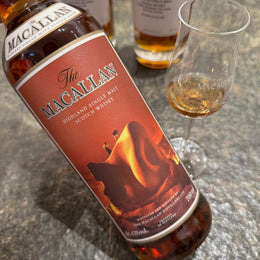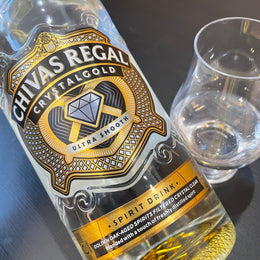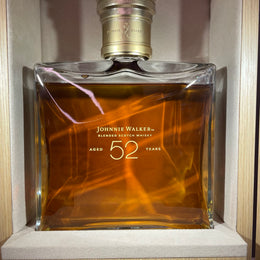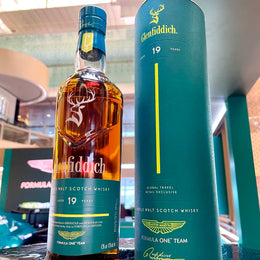In an earlier review, we talked about how Bruichladdich kickstarted the Islay Barley project - in a nutshell, Bruichladdich attempted to reintroduce barley farming for use in their distillery. The goal was to make a true-blue Islay whisky which reflected the terroir of the island; and the core philosophy was that it all started from where the malt was sourced from.

Barley cultivation in Islay. Source: Bruichladdich
Planting barley in Islay was no easy feat - however, with enough hard work and experimenting, the joint effort between Bruichladdich and farmers bore fruit - and in 2004, the very first Islay grown malt whisky was distilled. Of course, it wouldn't just stop there - part of this Islay Barley project was to try out different strains and varietals of barley as well.
Most malters and whisky producers uses two-row barley (left), where the barley grains are arranged opposite of each other. Bere barley (right) is a six-row barley, where the barley grains are arranged in a six-pointed star formation when viewed from the top. Source: University of Minnesota

A particular varietal, the Bere (pronounced "bear"), came into interest. This barley varietal (Hordeum vulgare L.) has a bit of history to it - apparently, some scholars date their agricultural roots to as early as the Bronze Age! The barley is said to be introduced by the Norse to Scotland, which cultivation spread to North Britain and Ireland and became a landrace variety: one where a plant or animal species naturally adapts to the new environment they have been introduced to, sometimes through domestication.
Bere barley field. Source: Orkney.com
The Bere barley had a few advantages going for it - one, it was a hardy species of barley which could adapt to the high amounts of sunlight and short growing period of Scotland. In particular, Bere barley was well suited for cultivation along coastal environments, due to its adaptability to high pH (more basic) sandy soils that are lacking in magnesium and other essential minerals.
Source: Scotch Whisky
As with many landrace species (species of plants or animals that have been locally adapted and domesticated), Bere barley saw a decline in cultivation when the Industrial Revolution came rolling. More productive varietals of barley was grown, and with the help of heavy machinery and chemical fertilisers, there wasn't much need to grow Bere barley anymore. Bere faced near extinction, with only 10 hectares of it being grown in the 19th and 20th century at its lowest.
Barony Mill. Source: Scottish Food Guide
The existential demise would have come to pass, if not for a 19th-century Orkney watermill Barony Mill that had been using the barley for their baked goods. Came 2002 and with the hard work of the Agronomy Institute of the University of the Highlands and Islands (UHI) in Orkney, Bere barley cultivation has been thoroughly researched on - with the institute promoting its cultivation and use in beer, bakes and whisky.
![]()
Bannock, a type of flatbread in Scotland, made using beremeal at Barony. Source: Scotch Whisky
So, where does Bruichladdich come into the picture? Bruichladdich wanted to explore other varietals of barley and see how they affect the final flavour of the whisky - at the same time, increasing genetic diversity and supporting regenerative agriculture. Hence, Bruichladdich partnered with the institute since 2005 to bring the Bere barely to Islay for cultivation. So far, only a handful of distilleries have used Bere barley, Arran and Springbank to name a few.

Source: Bruichladdich
Here's another quirk of Bere barley, according to the Bruichladdich brand ambassador that was speaking during this Bruichladdich tasting. Apart from being low yield, hardy, and having more rows than the conventional barley, Bere barley has a very hard shell and bran as well - so much so that a few of Bruichladdich's equipment broke trying to grind it! Arran has also faced similar difficulties, with the Bere barley clogging up the mash tun.

For today's tasting, we are having the Bruichladdich Bere Barley 2012 - using Bere barley grown by the UHI in 2011. The malted barley is then distilled and aged for 10 years, in first fill Bourbon Casks. We had this Bruichladdich tasting held in El Pico, a Cuban-inspired members only club.
Let's go!
Bruichladdich Bere Barley 2012, 50% ABV - Review

Nose: Deeper, toasted aromas. There is some smokiness in the whisky - reminding me of heavily caramelized puff pastry with a crust and some char on the sugar. Beneath the burnt cereal aroma, I get toasted banana bread.
Taste: Initially tastes like a diluted sweet red tea. After the initial sugar rush, you get a raspberry flavour that slowly arises from the palate. It develops a bit closer to strawberry hard candy, with a bit of corn flakes.

Finish: The finish develops towards a more savoury, nuttier profile. There's a hint of mushroom savouriness as well, alongside a roasted salted almonds flavour that has a bit of sugar dusted over them.
My Thoughts
What I like most is the variance in the nose, taste and finish. Nevertheless the whisky still remains balanced and cohesive, the complex elements not tipping the dram out of balance.
Rating: 7.5/10
|
Score/Rating Scale :
|
Read our tasting review of the Singapore-exclusive Bruichladdich Micro Provenance Cask #0287 and the Islay Barley 2013!

@vernoncelli







